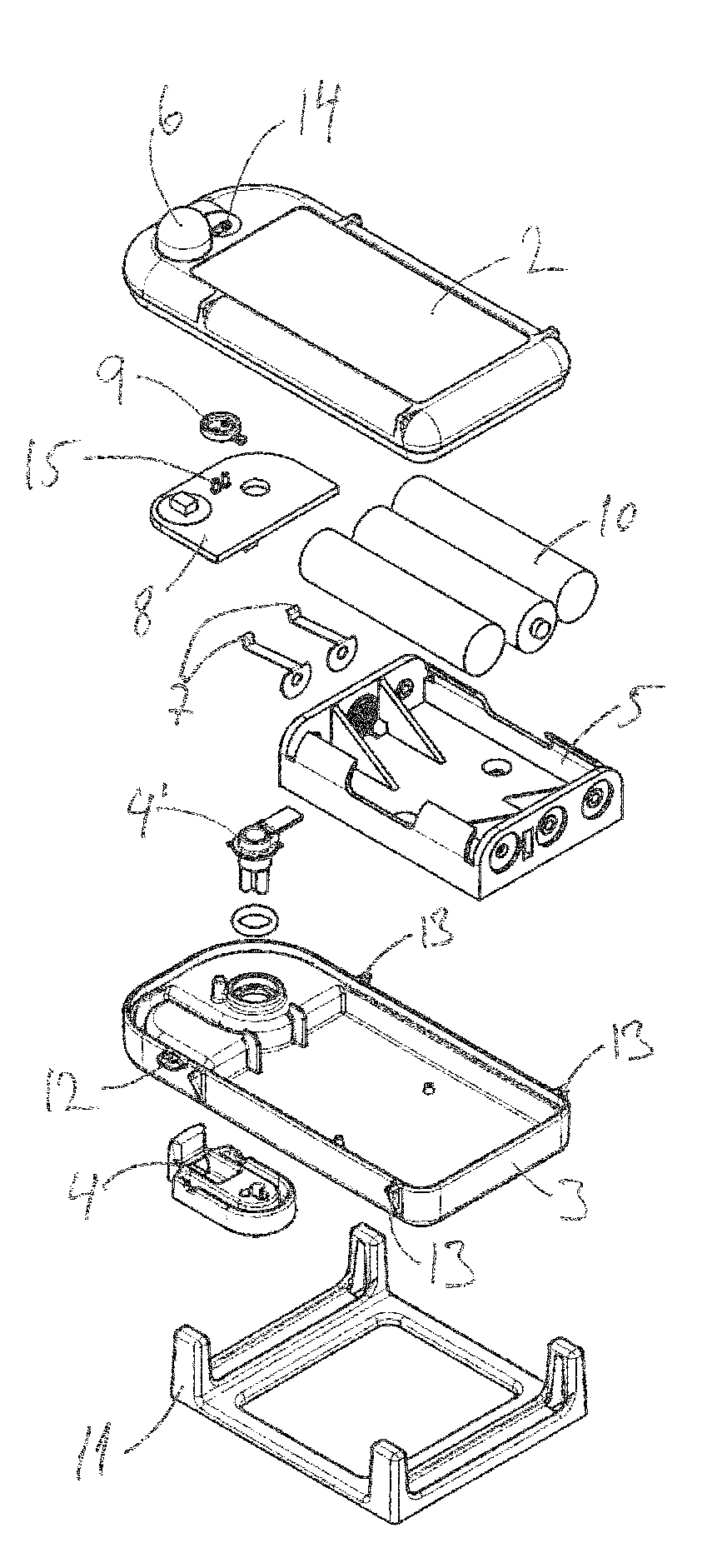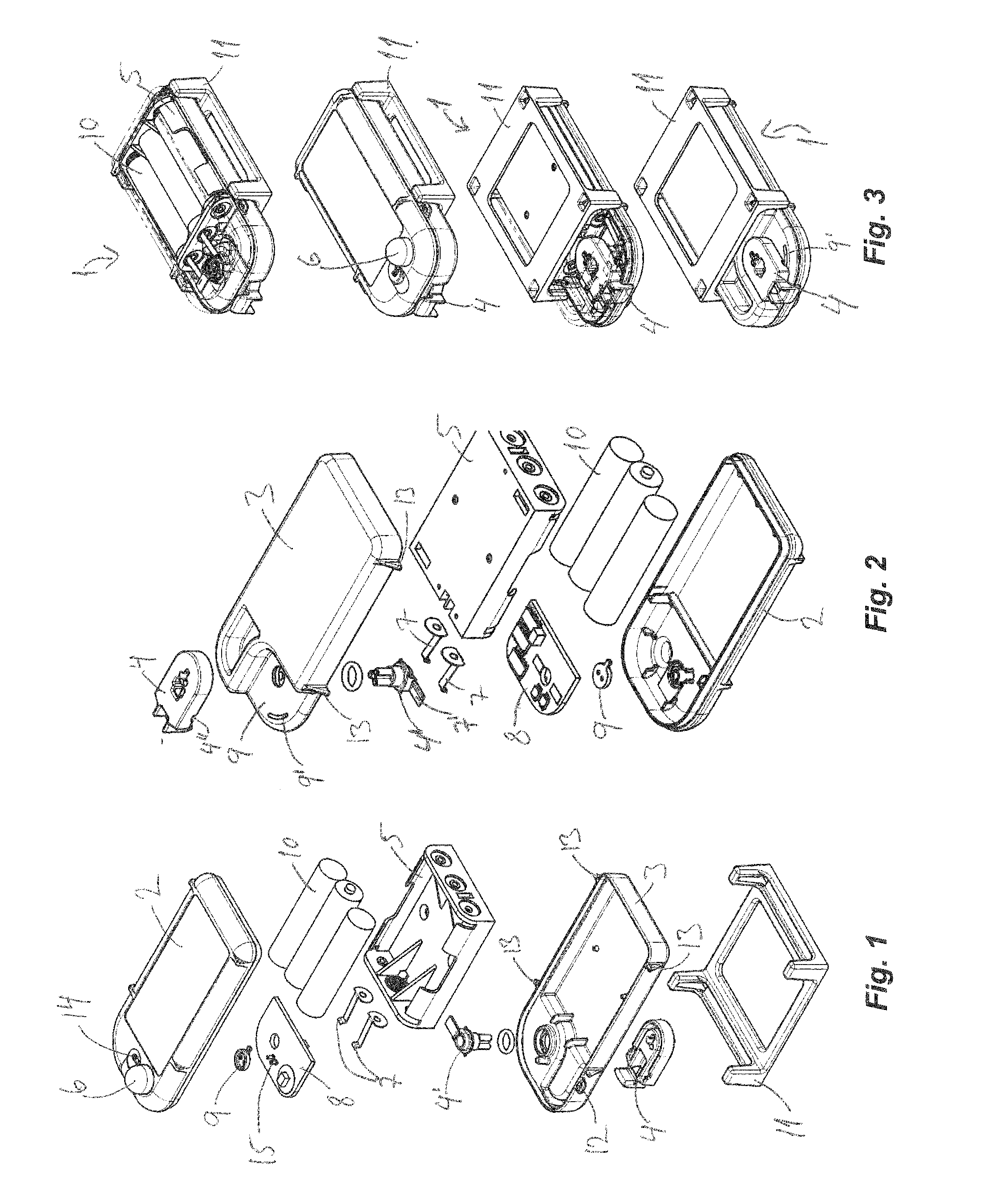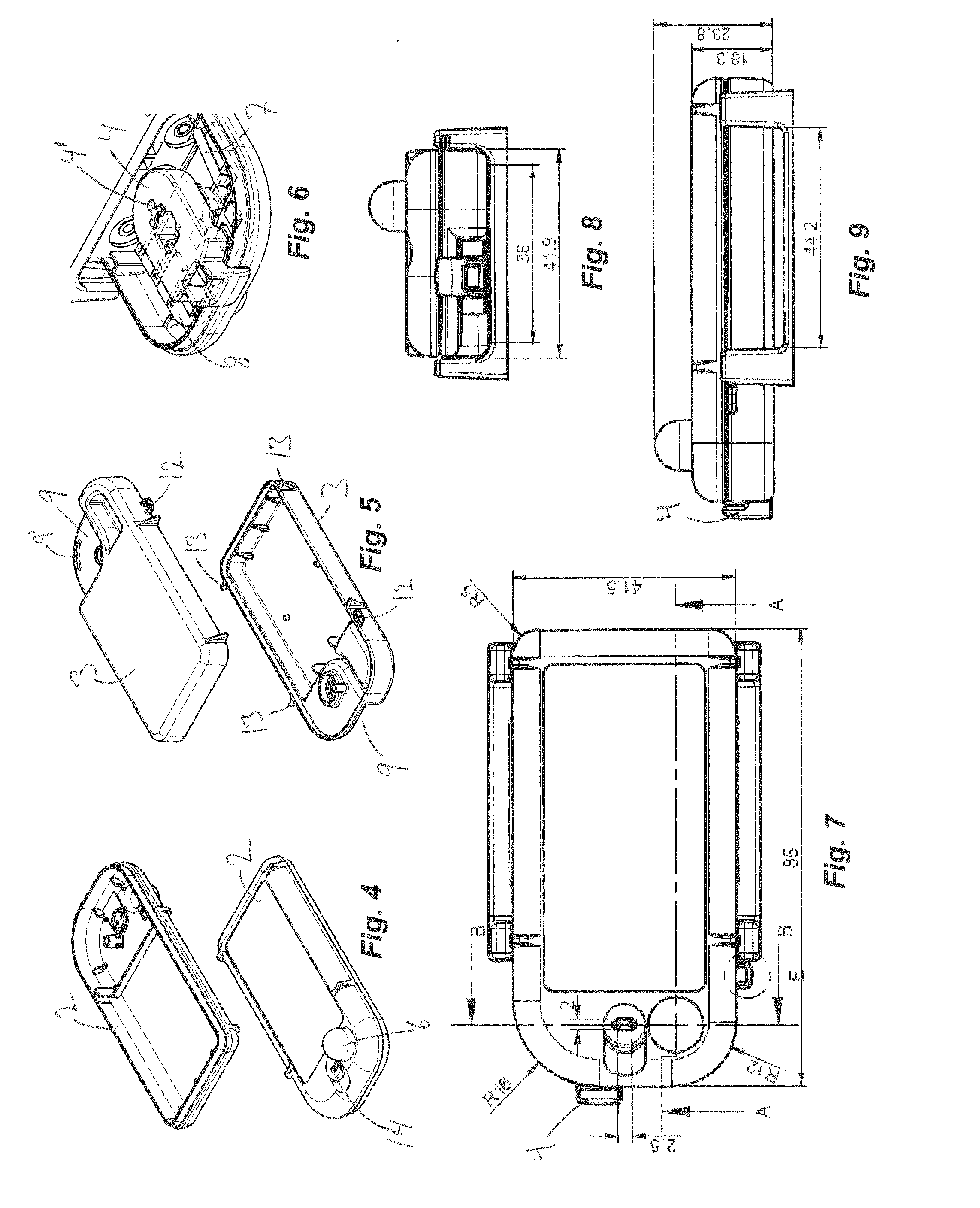Emergency light device for marine environments
a technology for emergency lighting and marine environments, applied in life-saving, vessel safety, lighting protection devices, etc., can solve the problems of unnecessary risk for anyone caught in life-threatening situations, and the design of known emergency light devices is a bit bulky
- Summary
- Abstract
- Description
- Claims
- Application Information
AI Technical Summary
Benefits of technology
Problems solved by technology
Method used
Image
Examples
examples
[0076]The SOLAS directive implies a number of minimum requirements for emergency lights on lifejackets. In a preferred embodiment of the invention the emergency light device complies with all the requirements of the SOLAS directive. The requirements are:[0077]1. A luminous intensity of at least 0.75 cd in all directions of the upper hemisphere.[0078]2. A light source in white colour.[0079]3. A source of energy capable of providing a luminous intensity of at least 0.75 cd for a period of at least 8 hours.[0080]4. Visibility over the greatest possible segment of the upper hemisphere as is practicable when attached to a lifejacket.[0081]5. For a flashing light source the emergency light shall be provided with a manual switch and a flash rate of between 50 and 70 flashes per minute with an effective luminous intensity of at least 0.75 cd.
[0082]Requirements 1 and 2 are satisfied by using a white light emitting diode (LED). LEDs have been known for many years but only recently have reliab...
PUM
 Login to View More
Login to View More Abstract
Description
Claims
Application Information
 Login to View More
Login to View More - R&D
- Intellectual Property
- Life Sciences
- Materials
- Tech Scout
- Unparalleled Data Quality
- Higher Quality Content
- 60% Fewer Hallucinations
Browse by: Latest US Patents, China's latest patents, Technical Efficacy Thesaurus, Application Domain, Technology Topic, Popular Technical Reports.
© 2025 PatSnap. All rights reserved.Legal|Privacy policy|Modern Slavery Act Transparency Statement|Sitemap|About US| Contact US: help@patsnap.com



